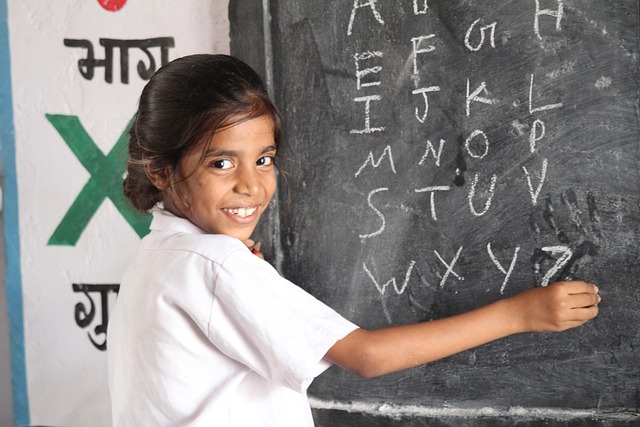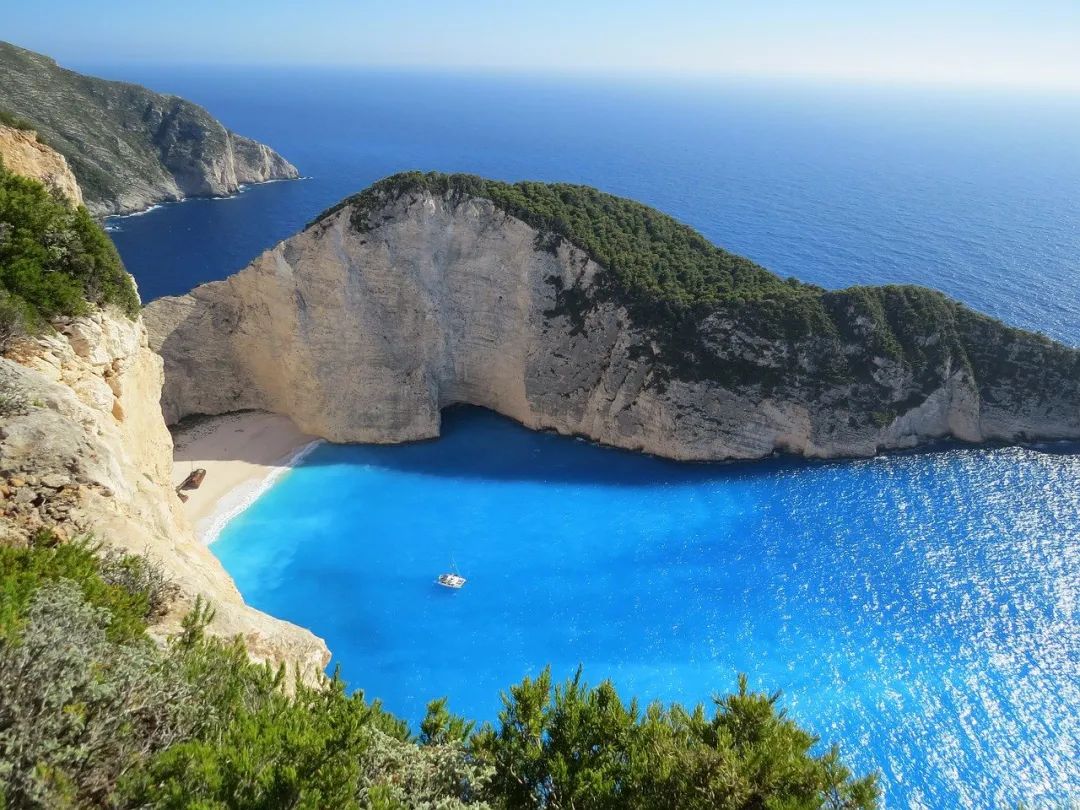职称英语考试综合类经典阅读题

A Ride in a Cable-car
A ride in a cable-car is one of the exciting and enjoyable experiences a child can have. In Switzerland, which is the home of the cable-car, it is used mostly to take tourists up the slope of a mountain, to a restaurant from which one can have a bird-eye view of the surrounding country, or to a top of a ski-run, from which, in winter, skiers glide down the snow covered the slope on skis. In Singapore, however, the cable-car takes one from the summit of a hill on the main island to a low hill on Sentosa, a resort island just off the southern coast.
The cable-car is really a carriage which hangs from a strong steel cable suspended in the air. It moves along the cable with other cars on pulleys, the wheels of which are turned by electric motors. The cars are painted in eye-catching colours and spaced at regular intervals. Each car can seat up six persons. After the passengers have entered a car, they are locked in from outside by an attendant, they have no control over the movement of the car.
Before long, the passengers get a breath-taking view through the glass windows of the modern city, the bustling harbour, and the several islands off the coast. The car is suspended to a high in the air that slips on the sea look like small boats, and boats like toys. On a clear day, both the sky above and the sea below look beautifully blue.
In contrast to the fast-moving traffic on the ground, the cars in the air move in a leisurely manner, allowing passengers more than enough time to take in the scenery during the brief trip to the island of Sentosa. After a few hours on Sentosa, it will be time again to take a cable-car back to Mount Faber. The return journey is no less exciting than the outward trip.
1. The cable-car in Singapore
A)takes visitors up to a mountain restaurant.
B)takes skiers to the top of a ski-run.
C)takes visitors to Sentosa.
D)takes visitors to a high mountain.
2. Which of the following about the cable-cars is true?
A)The cars move along the steel cable.
B)The cars are operated by a driver.
C)The cars are controlled by the passengers.
D)The cars move on wheels.
3. Passengers can get a breath-taking view when riding in a cable-car because
A)The car is painted in eye-catching colours.
B)The car is suspended so high in the sky.
C)Each car can seat up to six persons.
D)Both the sky and the sea look beautifully blue.
4. The short trip does not bother passengers who want a good view because
A)the cars move slowly.
B)the cars move quickly.
C)the cars are suspended very high.
D)the cars have glass windows.
5. The last sentence of the passage The return journey is no less exciting than the outward trip, means
A) The return trip is less boring than the outward ones.
B) The return trip is more enjoyable than the outward ones.
C) The return trip is as thrilling as the outward one
D) Both the outward and the return trips are uninteresting.
Key:CABAC
Martin Luther King Jr.
By the time the Montgomery Improvement Association chose the 26-year-old Martin Luther King Jr. as its leader, the hours-old bus boycott by the black citizens of Montgomery, Alabama, was already an overwhelming success. King would later write that his unanticipated call to leadership happened so quickly that I did not have time to think in through. It is probable that if I had, I would have declined the nomination.
Although press reports at the time focused on his inspiring oratory, King was actually a reluctant leader of a movement initiated by others. His subsequent writings and private correspondence reveal man whose inner doubts sharply contrast with his public persona. In the early days of his involvement, King was troubled by telephone threats, discord within the black community and Montgomerys get tough policy, to which king attributed his jailing on a minor traffic violation. One night, as he considered ways to move out of the picture without appearing a coward, he began to pray aloud and, at that moment, experienced the presence of the God as I had never experienced Him before.
He would later admit that when the boycott began, he was not yet firmly committed to Gandhian principles. Although he had been exposed to those teachings in college, he had remained skeptical. I thought the only way we could solve our problem of segregation was an armed revolt, he recalled. I felt that the Christian ethic of love was confined to individual relationships.
Only after his home was bombed in late January did king reconsider his views on violence. Competing with each other to influence King were two ardent pacifists: Bayard Rustin, a black activist with the War Resisters League, and the Rev. Glenn E. Smiley, a white staff member of the Fellowship of Reconciliation. Rustin was shocked to discover a gun in Kings house, while Smiley informed fellow pacifists that Kings home was an arsenal.考试大
1. What did King think of his nomination as leader of the Montgomery Boycott?
A) He hadnt expected it.
B) He had to think about it carefully.
C) He would refuse to accept it.
D) He was prepared to accept it.
2. Why was King unwilling to lead the movement at first?
A) Because he doubted if the boycott would be successful.
B) Because he was troubled with a traffic accident at that time.
C) Because he thought he was too young to be a leader.
D) Because he himself didnt start the boycott.
3. Which of the following is Not mentioned as something that happened at the beginning of the black peoples movement?
A) King was put into prison.
B) Black people disagreed with each other.
C) Kings armed revolt proposal was turned down.
D) Black people found it hard to accept the policy pursued in Montgomery.
4. Which of the following was the immediate cause that made King change his view on violence?
A) The education he received in college.
B) The attack of his home.
C) The influence of two active non-violence advocates.
D) The verdict of the Supreme Court.
5. In Paragraph 4, the last sentence Kings home was an arsenal means
A) Kings home was a place where people got together.
B) Kings home was a place where people tested bombs.
C) Kings home was a place where weapons were stored.
D) Kings home was a place where bombs exploded.
Keys:ADCBC
A Ride in a Cable-car
A ride in a cable-car is one of the exciting and enjoyable experiences a child can have. In Switzerland, which is the home of the cable-car, it is used mostly to take tourists up the slope of a mountain, to a restaurant from which one can have a bird-eye view of the surrounding country, or to a top of a ski-run, from which, in winter, skiers glide down the snow covered the slope on skis. In Singapore, however, the cable-car takes one from the summit of a hill on the main island to a low hill on Sentosa, a resort island just off the southern coast.
The cable-car is really a carriage which hangs from a strong steel cable suspended in the air. It moves along the cable with other cars on pulleys, the wheels of which are turned by electric motors. The cars are painted in eye-catching colours and spaced at regular intervals. Each car can seat up six persons. After the passengers have entered a car, they are locked in from outside by an attendant, they have no control over the movement of the car.
Before long, the passengers get a breath-taking view through the glass windows of the modern city, the bustling harbour, and the several islands off the coast. The car is suspended to a high in the air that slips on the sea look like small boats, and boats like toys. On a clear day, both the sky above and the sea below look beautifully blue.
In contrast to the fast-moving traffic on the ground, the cars in the air move in a leisurely manner, allowing passengers more than enough time to take in the scenery during the brief trip to the island of Sentosa. After a few hours on Sentosa, it will be time again to take a cable-car back to Mount Faber. The return journey is no less exciting than the outward trip.
1. The cable-car in Singapore
A)takes visitors up to a mountain restaurant.
B)takes skiers to the top of a ski-run.
C)takes visitors to Sentosa.
D)takes visitors to a high mountain.
2. Which of the following about the cable-cars is true?
A)The cars move along the steel cable.
B)The cars are operated by a driver.
C)The cars are controlled by the passengers.
D)The cars move on wheels.
3. Passengers can get a breath-taking view when riding in a cable-car because
A)The car is painted in eye-catching colours.
B)The car is suspended so high in the sky.
C)Each car can seat up to six persons.
D)Both the sky and the sea look beautifully blue.
4. The short trip does not bother passengers who want a good view because
A)the cars move slowly.
B)the cars move quickly.
C)the cars are suspended very high.
D)the cars have glass windows.
5. The last sentence of the passage The return journey is no less exciting than the outward trip, means
A) The return trip is less boring than the outward ones.
B) The return trip is more enjoyable than the outward ones.
C) The return trip is as thrilling as the outward one
D) Both the outward and the return trips are uninteresting.
Key:CABAC
Martin Luther King Jr.
By the time the Montgomery Improvement Association chose the 26-year-old Martin Luther King Jr. as its leader, the hours-old bus boycott by the black citizens of Montgomery, Alabama, was already an overwhelming success. King would later write that his unanticipated call to leadership happened so quickly that I did not have time to think in through. It is probable that if I had, I would have declined the nomination.
Although press reports at the time focused on his inspiring oratory, King was actually a reluctant leader of a movement initiated by others. His subsequent writings and private correspondence reveal man whose inner doubts sharply contrast with his public persona. In the early days of his involvement, King was troubled by telephone threats, discord within the black community and Montgomerys get tough policy, to which king attributed his jailing on a minor traffic violation. One night, as he considered ways to move out of the picture without appearing a coward, he began to pray aloud and, at that moment, experienced the presence of the God as I had never experienced Him before.
He would later admit that when the boycott began, he was not yet firmly committed to Gandhian principles. Although he had been exposed to those teachings in college, he had remained skeptical. I thought the only way we could solve our problem of segregation was an armed revolt, he recalled. I felt that the Christian ethic of love was confined to individual relationships.
Only after his home was bombed in late January did king reconsider his views on violence. Competing with each other to influence King were two ardent pacifists: Bayard Rustin, a black activist with the War Resisters League, and the Rev. Glenn E. Smiley, a white staff member of the Fellowship of Reconciliation. Rustin was shocked to discover a gun in Kings house, while Smiley informed fellow pacifists that Kings home was an arsenal.考试大
1. What did King think of his nomination as leader of the Montgomery Boycott?
A) He hadnt expected it.
B) He had to think about it carefully.
C) He would refuse to accept it.
D) He was prepared to accept it.
2. Why was King unwilling to lead the movement at first?
A) Because he doubted if the boycott would be successful.
B) Because he was troubled with a traffic accident at that time.
C) Because he thought he was too young to be a leader.
D) Because he himself didnt start the boycott.
3. Which of the following is Not mentioned as something that happened at the beginning of the black peoples movement?
A) King was put into prison.
B) Black people disagreed with each other.
C) Kings armed revolt proposal was turned down.
D) Black people found it hard to accept the policy pursued in Montgomery.
4. Which of the following was the immediate cause that made King change his view on violence?
A) The education he received in college.
B) The attack of his home.
C) The influence of two active non-violence advocates.
D) The verdict of the Supreme Court.
5. In Paragraph 4, the last sentence Kings home was an arsenal means
A) Kings home was a place where people got together.
B) Kings home was a place where people tested bombs.
C) Kings home was a place where weapons were stored.
D) Kings home was a place where bombs exploded.
Keys:ADCBC









